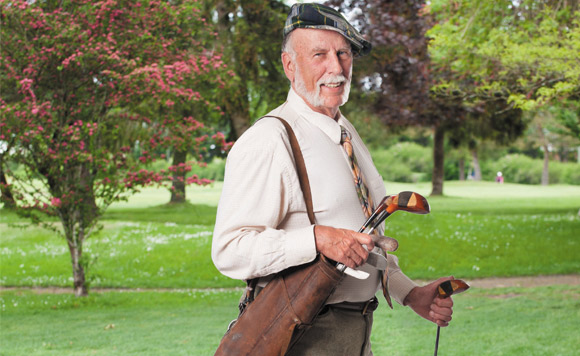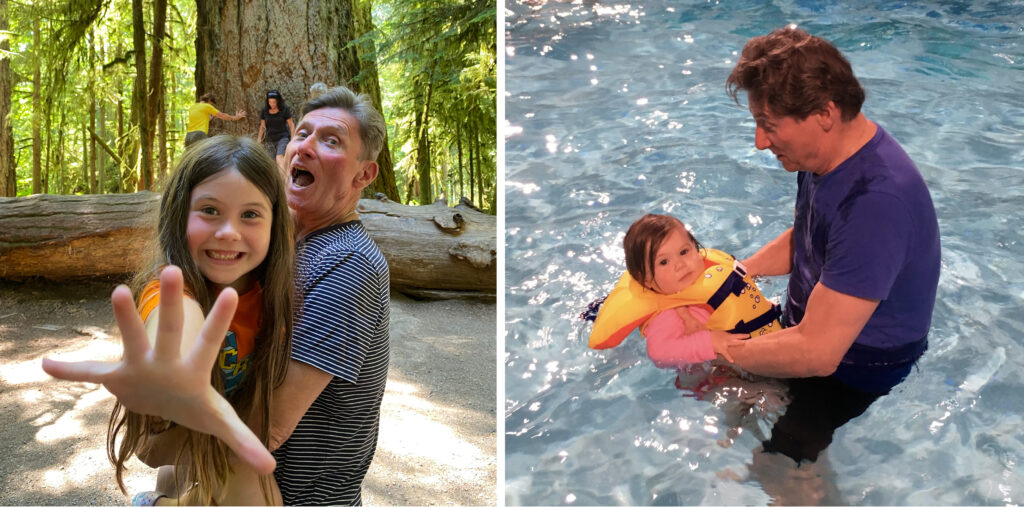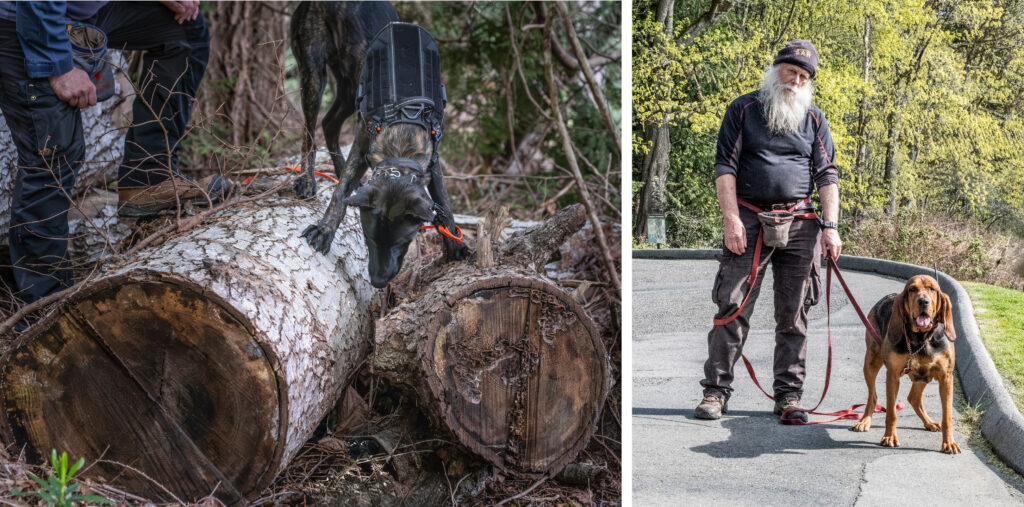Publisher Sue Hodgson Talks With Wally du Temple About Ardmore Golf Course “Then & Now”
It is amazing to think that Ardmore Golf Course, a nine-hole course, was built in 1886; it was the first golf course on Vancouver Island built by William Le Poer Trench. In 1946, after his decommissioning from the Royal Canadian Air Force, your father George Walter du Temple bought Ardmore for $25,000. You would have been six years old at the time. Can you give us a glimpse of what life was like growing up then and what convinced your father to purchase the property?
We arrived on Halloween 1946 in a packard sedan – mom, dad, three brothers and a cocker spaniel – with our chattels on a trailer. There were only a few summer cottages on the dirt track of Ardmore Drive. Dad said that Victoria would grow towards Sidney so in the long term, a purchase of the golf course made sense. In the short term, the property could remain partly a farm. In fact, hay production and sales already dictated that the fairways be narrow. It was like a farm and a golf course played through it. To help run the operation Roy and Lily Walker, mom’s sister and brother-in-law, moved onto the property after selling their farm in Ashcroft. Soon my eldest brother Ron and Roy built a barn and Dad bought jersey cows and chickens. My mom made butter and sold golf balls, butter, milk and eggs in the golf pro shop.
You are one of three brothers. Ron and his wife Betty and Barry du Temple have also had a big part in the family business of Ardmore Golf Course. The third generation is now taking over. As the last of the second generation, describe some of the changes that have occurred to the property.
The farming aspect of the business gradually disappeared as the Peninsula population grew and more golfers joined the club. The family decided to rebuild the golf course one fairway, grass tee and green at a time. The first phase required the building of a reservoir and the drilling of wells for irrigation.Next we hired Terra Irrigation to install a state-of-the-art irrigation system. A quality system needs quality personnel, so we hired one of the best superintendents from Victoria Golf Club, Greg de Jong, to upgrade everything in terms of maintenance and future planning. Alison Lee was appointed GM and Greg and Alison worked as a team to get things done during this very important period of rebuilding.
Ardmore’s success today has come from the long traditions of strong family values and remarkable work ethic. With a new general manager, Jeff Palmer, on board and a new superintendent on the horizon, what exciting things can we expect to see at the course in the near future?
Jeff Palmer brings to Ardmore a wealth of experience in golf business. He is a Class A Professional of PGA of Canada with an Executive Leadership Diploma from Cornell University. As head pro he has invited Cari Chow, who recently turned pro after playing on the UVic Vikes Golf team, to teach at Ardmore, so our golf academy is already growing. With the new team of “Super” Dave Morgan and Jeff we are likely to see some pro am tournaments and qualifiers at Ardmore.
The neighbouring communities around the course have always been vitally important to your family. Ardmore was very involved in the fundraising efforts of Sanscha Hall (now the Mary Winspear Centre). Can you expand on this for our readers?
Representing the family business, I was one of 12 men and women who boldly guaranteed the loans necessary to do the needs surveys, make architectural drawings and models, and to launch a professional fundraising campaign to replace Sanscha Hall with a state-of-the-art cultural centre. Ardmore contributed $30,000 so that we could raise donations from a position of leadership: “We have done this; can you help as well?” I worked on the fundraising foundation until we reached our target of $5 million. At the beginning the municipal governments were not on side. Ardmore is recognized on the “Wall of Honour” at the Mary Winspear Centre.
You won your first golfing championship at 14, and five local and one regional tournament followed. As a certified teaching professional, what can you advise the younger generation who are thinking of heading into this field?
Golf is more than a sport. Boys, girls and adults can learn sportsmanship, etiquette, manners and creative thinking. Think of golf as a metaphor for life and teach it that way. Every moment in life or golf can be either positively creative or negatively destructive. Find a swing/occupation suited to the person; help create the intention to succeed and to accept each shot or action with a calm detachment that allows each result to be a positive learning experience. Learn some sports psychology. Each student, old or young, will have individual needs. Interview each student to assess health and expectations. Remember that golf and life are gifts. Keep the fun in both.
Over the years you have been involved in a number of life adventures, from teaching and writing to travelling and volunteering. What was one journey that stands out among them all?
I co-led the Brentwood College Canoe Brigade in 1968. My brother Barry and I guided 14 private school boys in two 25-foot wood canvas “voyageur” canoes for a month-long, 685-mile outward bound saga. We canoed the rivers Muskwa, Fort Nelson, Liard, South Nahanni and the Mackenzie Rivers in the NWT. We carried all our provisions from the start, and had no motors but only our muscles and discipline to work as two-canoe teams from Fort Nelson to Fort Providence while experiencing the talkative wonders of nature.
We are celebrating our Men To Watch in this issue, and one of the questions we asked our men was: “What is the best advice your Dad ever gave you?” Could you please share what values your father instilled in you?
Dad would say: “Look for the good in people; it is always there.”
Photo by www.nuttycake.com.




